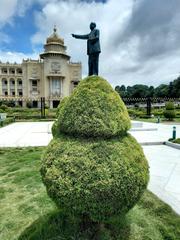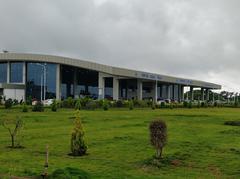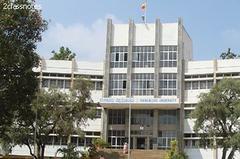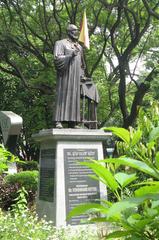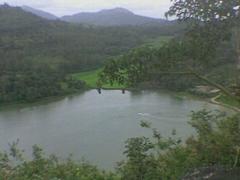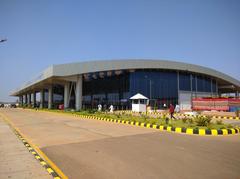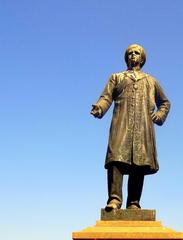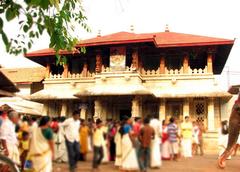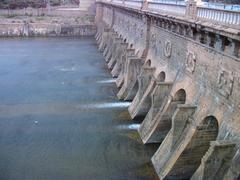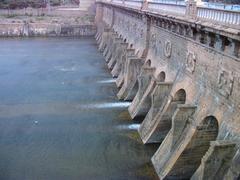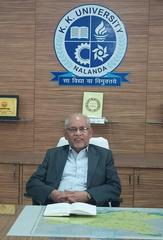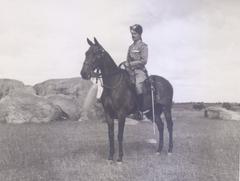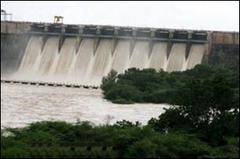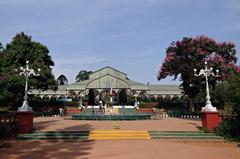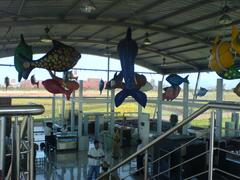
Chitradurga Fort: Visiting Hours, Tickets, and Historical Travel Guide
Date: 04/07/2025
Introduction
Chitradurga Fort, known locally as “Kallina Kote” (Stone Fortress) and “Elusuttina Kote” (Fort of Seven Circles), stands as one of Karnataka’s most iconic historical monuments. Sprawled across the rugged granite hills of Chitradurga, the fort is a stunning blend of ancient military strategy, monumental architecture, and enduring cultural traditions. Its origins date back to the 11th–13th centuries, with fortifications developed by the Chalukyas and Hoysalas, and later expanded by the Nayakas of Chitradurga, who transformed it into a formidable stronghold and thriving cultural hub.
The fort is not only remarkable for its impressive defensive features—seven concentric walls, intricate gateways, and secret passages—but also for its vibrant legends, temples, and living traditions. Figures such as Onake Obavva, the legendary heroine, and connections to the Mahabharata through the Hidimbeshwara Temple further enrich the site’s allure. Today, Chitradurga Fort attracts history buffs, adventurers, photographers, and families seeking to immerse themselves in Karnataka’s layered heritage.
This comprehensive guide presents the fort’s history, architectural marvels, cultural significance, and essential visitor information—including visiting hours, ticket prices, travel tips, and more—to help you plan an enriching and memorable visit.
For further insights, see VikiPandit, SoloPassport, and Chitradurgatourism.com.
Historical Overview
Early Origins and Strategic Importance
Chitradurga Fort’s foundations were laid by the Chalukyas and Hoysalas between the 11th and 13th centuries, leveraging the region’s rocky terrain and proximity to the Vedavati River. The site’s natural defenses and commanding vantage points made it a coveted military outpost, especially during the Vijayanagara Empire’s reign. The fort’s layered walls and maze-like gateways exemplified sophisticated defensive planning, earning it the moniker “Ukkina Kote” (Steel Fort).
The Nayakas of Chitradurga
The Nayakas, originally local Bedar chieftains, rose to prominence in the 15th century under the Vijayanagara Empire. After the empire’s fall, they established Chitradurga as their capital, expanding the fort and ushering in a golden era of architectural and administrative development. Rulers like Madakari Nayaka IV are celebrated for their resistance to invasions and cultural patronage.
Decline and Legacy
The Nayaka dynasty’s rule ended in 1779 after Hyder Ali’s forces captured the fort. It subsequently passed to Tipu Sultan and later to the British. Despite this, the Nayakas’ architectural and cultural contributions remain integral to the region’s identity.
Architectural Highlights
Seven Concentric Walls
One of Chitradurga Fort’s defining features is its seven massive concentric stone walls, built between the 10th and 18th centuries (SCRActivity). These formidable defenses, interspersed with moats and open spaces, made the fort nearly impregnable.
Grand Gateways and Secret Passages
The fort boasts 19 gateways, including Gali Mantapa with its distinctive carvings. Bent passageways and narrow entrances were designed to slow down and confuse invaders (VikiPandit). Secret passages like Onake Obavva Kindi played critical roles during sieges (OyoRooms).
Watchtowers, Bastions, and Water Systems
More than 2,000 watchtowers once dotted the fort, providing surveillance and strategic advantage. Ingenious water storage systems—reservoirs, wells, and interlinked tanks—ensured a reliable supply during blockades (VikiPandit).
Temples and Integration with Landscape
The fort complex houses 18 temples, including the prominent Hidimbeshwara Temple, linking the site to Mahabharata lore (SCRActivity). Natural boulders and rock formations are seamlessly integrated into the fort’s walls and bastions, enhancing both defense and aesthetics (OyoRooms).
Cultural Legends and Living Traditions
Onake Obavva: The Heroic Defender
Legend tells of Onake Obavva, who, during Hyder Ali’s siege, defended the fort single-handedly using a wooden pestle (onake). Her courage is immortalized at the Onake Obavva Kindi, now a memorial site (SoloPassport; iShareThese).
Mythological Connections
The Hidimbeshwara Temple is dedicated to Hidimba from the Mahabharata. Local lore claims Bhima slew the demon Hidimbasura here, and a tooth believed to be Bhima’s is preserved in the temple (UmeDesi; TourTravelWorld).
Rituals, Festivals, and Oral Traditions
The fort’s temples are active sites of worship, especially during festivals like Mahashivaratri and Navaratri. Folk music, dance, and dramatizations of Onake Obavva’s valor are regularly performed, keeping traditions alive (CultureAndHeritage.org). Local guides and community members play a significant role in preserving and sharing these stories (SoloPassport).
Visitor Information
Visiting Hours
- Typical timings: 6:00 am – 6:00 pm (some sources state 8:00 am – 5:30 pm or 9:00 am – 6:00 pm). Verify before visiting (India-a2z; Revolving Compass).
Tickets
- Indian adults: ₹25–₹30
- Children (under 15 years): Free
- Foreign tourists: ₹300–₹500
- Camera fee: ₹25; Video camera fee: ₹50
Check official sources for the latest prices.
Accessibility
Due to its rocky and uneven terrain, accessibility is limited for differently-abled visitors. However, some improvements have been made near the entrance; contact local tourism offices for assistance.
Guided Tours
Local guides are available at the entrance, typically charging ₹500 for a 1.5–2-hour tour. Guides enrich the visit with historical context and legends (SoloPassport; Revolving Compass).
Practical Tips
- Wear comfortable shoes and sun protection.
- Carry water, especially in summer.
- Plan your visit in the cooler months (October–February).
- Respect the site: avoid climbing on monuments or defacing structures.
How to Reach Chitradurga Fort
- By Road: Well-connected via NH-4, approx. 3–4 hours from Bangalore. Buses and auto-rickshaws are available locally (Backpackrkl).
- By Rail: Chitradurga Railway Station (CTA), 3 km from the fort (Trawell.in).
- By Air: Nearest airport is Bangalore (200 km away).
Key Attractions Inside the Fort
- Seven Concentric Walls: The fort’s legendary defensive rings (India-a2z; Trawell.in).
- Main Gates: Decorated with cobras, Gandaberunda, and lotus motifs.
- Temples: Hidimbeshwara, Sampige Siddeshwara, Gopalakrishna, Uchchangiamma.
- Onake Obavvana Kindi: Site of the legendary defense.
- Citadel and Masjid: Reflecting the region’s diverse heritage.
- Granaries and Water Tanks: Showcasing self-sufficiency.
Activities and Experiences
- Trekking & Boulder Climbing: Popular trails and climbing spots (Saka Holidays).
- Photography: Dramatic vistas and architecture, especially at sunrise/sunset.
- Nearby Attractions: Chandravalli Caves, Vani Vilas Sagar Dam, Jogimatti Forest, Shri Jain Basadi, Kuppe Temple, Hidlumane Falls (Holidify).
Local Cuisine
Sample local Karnataka dishes such as:
- Jolada Rotti (jowar flatbread)
- Akki Rotti (rice roti)
- Shenga Chitranna (peanut rice)
- Kunda (sweet)
- Kotte Kadabu (rice dumplings) (Saka Holidays)
Frequently Asked Questions (FAQs)
Q: What are the visiting hours?
A: Typically 6:00 am – 6:00 pm. Confirm before visiting.
Q: How much are tickets?
A: ₹25–₹30 for Indian adults, ₹300–₹500 for foreigners, children free.
Q: Are guided tours available?
A: Yes, at the entrance.
Q: Is the fort accessible for people with disabilities?
A: Terrain is challenging, but some accessible areas near the entrance.
Q: What is the best time to visit?
A: October–February for pleasant weather.
Plan Your Visit
Chitradurga Fort is a living testament to Karnataka’s history, architectural ingenuity, and cultural vibrancy. Whether you’re exploring its monumental walls, tracing legendary tales, or enjoying panoramic views, the fort offers a rewarding experience for every visitor.
For more information and the latest updates, visit Chitradurgatourism.com and download the Audiala app for travel guides, maps, and real-time updates.
Recommended Resources
- Chitradurga Fort: Visiting Hours, Tickets, and Exploring One of Karnataka’s Historical Gems, 2024, Audiala
- Chitradurga Fort Visiting Hours, Tickets, and Architectural Highlights, 2024, VikiPandit
- Cultural Legends, Myths, and Visitor Guide to Chitradurga Fort: Exploring History, Traditions, and Practical Tips, 2024, SoloPassport
- Chitradurga Fort Visiting Hours, Tickets, and Complete Travel Guide to Chitradurga Historical Sites, 2024, Chitradurgatourism.com
- Exploring the Grandeur of Chitradurga Fort: A Historical Marvel in Karnataka, 2024, CultureAndHeritage.org
- Chitradurga Fort History and Architecture Facts, 2024, iShareThese
- Chitradurga Fort Travel Guide, 2024, OyoRooms
- Day Trip to Chitradurga Fort from Bangalore Karnataka, 2024, Revolving Compass
- Chitradurga Fort: A Complete Travel Guide, 2021, Backpackrkl






